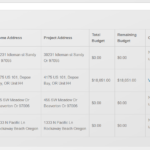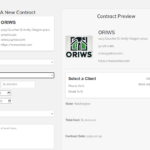Waterproofing is a crucial step in ensuring the longevity and performance of a tile installation, especially in areas prone to moisture like bathrooms, kitchens, and basements. Proper waterproofing not only protects the underlying surfaces but also prevents issues such as mold growth, water damage, and tile failure. Here’s a step-by-step guide on how to best waterproof a tile job to achieve a durable and water-resistant finish.
1. Plan and Prepare Your Space
Assess the Area: Before starting the waterproofing process, evaluate the area where you’ll be installing tiles. Identify potential sources of water intrusion and any existing damage that needs to be addressed.
Gather Materials: You’ll need a variety of materials, including waterproof membranes (liquid or sheet), a primer, a sealant, and appropriate adhesives. Make sure you choose products compatible with your tile and substrate.
2. Prepare the Substrate
Clean the Surface: Ensure the substrate (the surface where tiles will be installed) is clean, dry, and free of debris. Remove any old adhesive, dirt, or dust that might interfere with the waterproofing layer.
Repair Any Damage: Fix any cracks or holes in the substrate. Use a patching compound or repair mortar to address these issues and ensure a smooth, even surface.
Prime the Surface: Apply a primer if required by the waterproofing product you’re using. This helps improve the adhesion of the waterproofing membrane to the substrate.
3. Apply the Waterproofing Membrane
Choose the Right Membrane: There are two main types of waterproofing membranes: liquid and sheet. Liquid membranes are applied with a brush or roller, while sheet membranes are adhered to the substrate.
Liquid Membrane:
- Apply the liquid membrane evenly across the substrate using a brush or roller.
- Ensure you cover the entire surface, including corners and edges.
- Follow the manufacturer’s instructions for application thickness and drying time. Typically, you’ll need to apply multiple coats for full coverage.
Sheet Membrane:
- Cut the membrane to fit the area.
- Apply an adhesive or thin-set mortar to the substrate if required.
- Place the sheet membrane on the adhesive, smoothing out any wrinkles or air bubbles.
- Overlap seams by at least 2 inches and seal them with waterproof tape if recommended by the manufacturer.
4. Seal Joints and Penetrations
Corners and Edges: Apply a waterproof sealant or membrane strip to all corners, edges, and changes in plane (where walls meet floors, etc.). This helps create a continuous waterproof barrier.
Penetrations: Seal around any penetrations (e.g., pipes, drains) with a waterproof sealant or a specialized membrane designed for these areas.
5. Install the Tile
Choose the Right Adhesive: Use a waterproof thin-set mortar or adhesive specifically designed for wet areas. This helps ensure that the tile installation remains secure and resistant to moisture.
Tile Installation: Follow standard tile installation practices, including applying mortar evenly, setting tiles with proper spacing, and ensuring good coverage of the back of the tiles.
Grout: After the tiles are set and the mortar has cured, apply a grout that is also designed for wet areas. Use a grout sealer to enhance its water resistance.
6. Final Checks and Maintenance
Inspect the Work: Once the installation is complete and fully cured, inspect the job to ensure there are no gaps, cracks, or areas where water could potentially penetrate.
Regular Maintenance: Maintain your tile installation by regularly cleaning and inspecting for any signs of damage or wear. Address any issues promptly to prevent water damage.
Conclusion
Waterproofing a tile job is an essential step in achieving a durable and water-resistant installation. By carefully preparing the substrate, applying a high-quality waterproofing membrane, sealing joints and penetrations, and using appropriate adhesives and grouts, you can ensure that your tile job stands up to moisture and lasts for years to come.
For professional assistance or more information on waterproofing techniques, don’t hesitate to contact a local expert or contractor. Proper waterproofing is an investment in the longevity and performance of your tile installation, and it’s worth getting right.
Visit our homepage by clicking here!
Visit our Yelp and check our reviews by clicking here!


